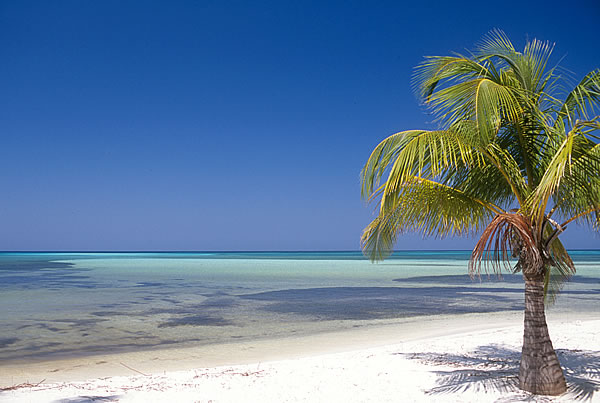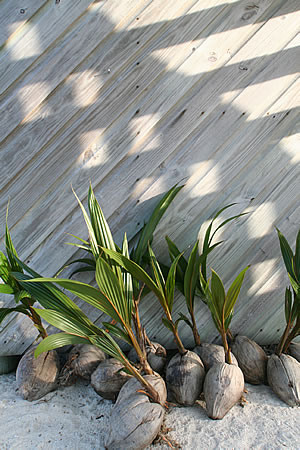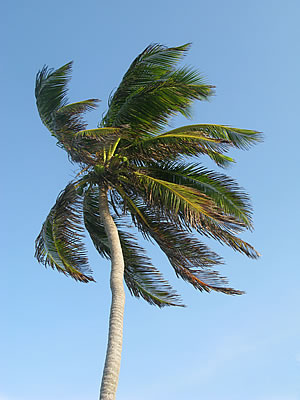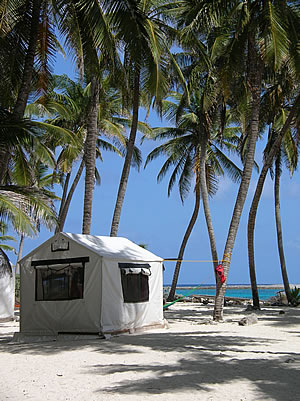 What would a tropical vacation be without the rustle and sway of the leaves of the mighty yet humble coconut tree? It is hard to imagine a Caribbean beach without them. And yet, like a fellow traveller, the ubiquitous coconut tree is not a native to these shores. Originally from the coasts of Africa and the Indian Ocean, the coconut palm was introduced to the Caribbean by early settlers. Being supremely well-adapted to a tropical maritime coast, coconut palms spread throughout the shores of the Caribbean and tropical America.
What would a tropical vacation be without the rustle and sway of the leaves of the mighty yet humble coconut tree? It is hard to imagine a Caribbean beach without them. And yet, like a fellow traveller, the ubiquitous coconut tree is not a native to these shores. Originally from the coasts of Africa and the Indian Ocean, the coconut palm was introduced to the Caribbean by early settlers. Being supremely well-adapted to a tropical maritime coast, coconut palms spread throughout the shores of the Caribbean and tropical America.
But coconuts are a mixed blessing, they are both beneficial and destructive.
The blessing is that the benefits of coconut are abundant, it is a rich resource of food, fuel and material for shelter. The nut is full of water, and rich in nutrients, especially oils. The nut and its husk provide excellent fuel for cooking and warmth. The shell of the nut is extremely hard and can be made into a variety of useful items from bowls to bras (festive use only), to jewellery and various forms of artwork. The leaves can be woven into hats, or employed to thatch roofs and walls. Even the flower stalk is used to make a broom to sweep the yard, or, sometimes, to discipline children.
 Young coconut trees
Young coconut trees
Coconut trees are an invasive, climax species, however, and once established on an island they start to take over. Dispersal is by water. The tree grows outward as well as upward, so the nuts will fall away from the trunk. If the tree is on the beach, some of the nuts will be washed out to sea where they may be carried long distances, to land on a distant shore. High tides and winds will push the nut above the high water where, as soon as it soaks up some rain, it will germinate. The tree grows quickly, shading out nearby trees and dropping its gigantic leaves (each frond is a single leaf) to cover the ground beneath it. If the tree is growing towards the forest, its leaves will smother the seedlings of other plants, or prevent their seeds from reaching the ground to germinate. The coconut, having a huge seed with plenty of stored food, can grow up through this tangled mat of leaf-fall, out-competing all others. In this way the coconut will gradually invade and choke out the native littoral forest.
At Half Moon Caye, on Lighthouse Reef, the littoral forest is under the protection and stewardship of the Belize Audubon Society. Here they are beginning to manage the forest by removing coconut trees that have been gradually invading and taking it over. Even there though, the tree is important and provides huge benefits. In the greater part of the island there is no littoral forest. Here coconut trees provide much-needed shade and stabilize the soil. Along the shore, a high wall of coconut trees helps protect the littoral forest from the winds of hurricanes and tropical storms. The key is to remove the trees which are invading, leaving a narrow buffer zone for the forest to grow into, and to keep those trees which cushion the forest against the terrible forces of storm winds.
One final word to the wise: before you linger too long in the shade of the coconut trees, look up. That is a heavy nut and the trees are tall.

What do you think about Coconuts? Do you like them because of their benefits, or hate them for being destructive?
